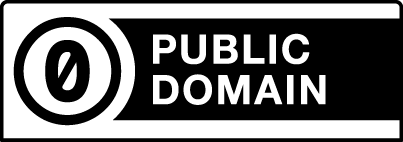- Photos & Map
How would you like to arrive?
- Call
- Description
- Good to know
- Nearby
The church, of which a predecessor building - a hall church with a recessed rectangular choir - from the 9th to 12th centuries was excavated during the restoration in 1998, has been remodelled and extended many times over the centuries.
In the first construction phase, it was built as a Romanesque pillar basilica with a single-nave transept and three apses (according to Pöppel, the builder was Werner von Brakel in 1158). The first changes were made under the construction-minded priest Berthold von Berg (1280-1345), who had the Romanesque apse torn down and the Gothic high choir erected (2nd construction phase). He probably also replaced the simple Romanesque gable roof of the tower with a Gothic tower. The next extension was the expansion of the south aisle (3rd construction phase; probably after the fire in 1517). In the 19th century, the tower was demolished and replaced by a new one, which was placed in front of the old one. There is hardly a parish church in the former Hochstift Paderborn for which the existence of an organ is attested as early as in Brakel.
The first mention of an organ in the Brakel parish archives dates back to 1349. The organ doors or wings consist of four oil paintings on canvas, front and back, which were only brought back together and restored to their original form during the restoration. The Annunciation and the Nativity can be seen on the coloured inner sides, and two Evangelists on the outer sides. The first stage of the painting on the wings is by Gerdt Strotmann (from 1585). The paintings were overpainted in 1683 by the Flemish-trained court painter of Ferdinand von Fürstenberg (1661-1683 Prince-Bishop of Paderborn), JOHANN GEORG RUDOLPHI, who came from Brakel. The reason for this was probably the changing taste of the time. The two double-sided painted organ wings from Brakel are the only ones of their kind in Westphalia.
Other sights include the pulpit (donated by the heirs of Balthasar Hatteisen in 1622), the stone high altar (donated in 1748) and the tombstone of the von Asseburg and Haxthausen family.
In the first construction phase, it was built as a Romanesque pillar basilica with a single-nave transept and three apses (according to Pöppel, the builder was Werner von Brakel in 1158). The first changes were made under the construction-minded priest Berthold von Berg (1280-1345), who had the Romanesque apse torn down and the Gothic high choir erected (2nd construction phase). He probably also replaced the simple Romanesque gable roof of the tower with a Gothic tower. The next extension was the expansion of the south aisle (3rd construction phase; probably after the fire in 1517). In the 19th century, the tower was demolished and replaced by a new one, which was placed in front of the old one. There is hardly a parish church in the former Hochstift Paderborn for which the existence of an organ is attested as early as in Brakel.
The first mention of an organ in the Brakel parish archives dates back to 1349. The organ doors or wings consist of four oil paintings on canvas, front and back, which were only brought back together and restored to their original form during the restoration. The Annunciation and the Nativity can be seen on the coloured inner sides, and two Evangelists on the outer sides. The first stage of the painting on the wings is by Gerdt Strotmann (from 1585). The paintings were overpainted in 1683 by the Flemish-trained court painter of Ferdinand von Fürstenberg (1661-1683 Prince-Bishop of Paderborn), JOHANN GEORG RUDOLPHI, who came from Brakel. The reason for this was probably the changing taste of the time. The two double-sided painted organ wings from Brakel are the only ones of their kind in Westphalia.
Other sights include the pulpit (donated by the heirs of Balthasar Hatteisen in 1622), the stone high altar (donated in 1748) and the tombstone of the von Asseburg and Haxthausen family.
Good to know
Openings
The Catholic parish church of St. Michael in Brakel can only be visited from the outside outside outside of masses.
General information
Parking Available
Payment methods
Entrance Free
Directions & Parking facilities
Parking spaces are available in the city center with time limits.
Contact person
Author
Organization
License (master data)
Stadt Brakel
Nearby






